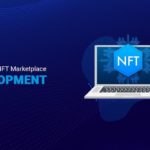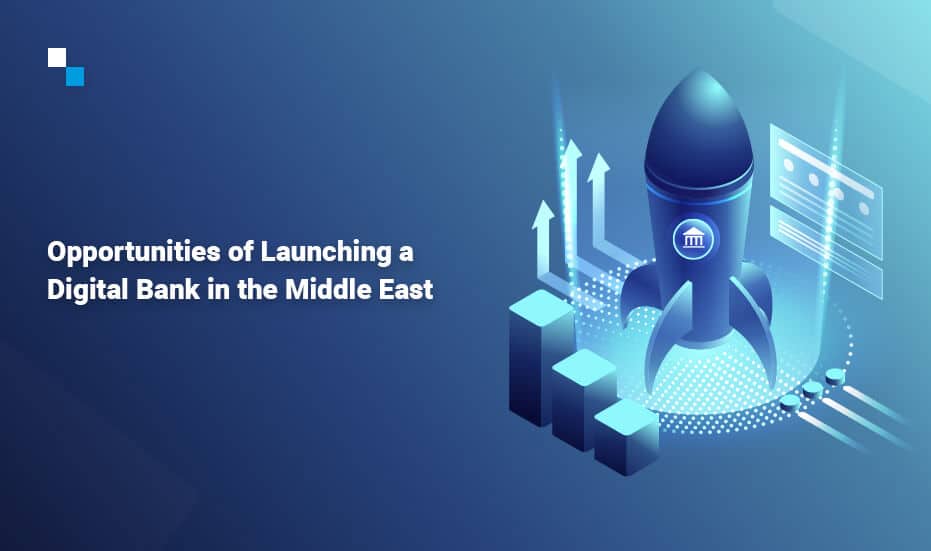
Benefits of White-Label NFT Marketplace Development
December 2, 2021
How to Build a Crypto Exchange like Remitano
December 6, 2021The financial industry is being impacted significantly by blockchain. Its distributed ledger system ensures a secure and immutable audit trail while speeding up transactions. It also offers a safe way to store and exchange digital materials without the use of third-party services. These distinct characteristics of Blockchain can potentially transform the banking industry
The following are some critical processes that are well-suited to blockchain-driven transformation:
1. Onboarding and identity management for customers: Customer onboarding is a typical and complex operation that requires multiple departments to conduct know your customer (KYC) and anti-money laundering (AML) checks. A digital asset banking solution based on Blockchain can leverage user information stored on the distributed ledger. This eliminates the need for the banks to ask for user information every time they need to verify and validate user information.
2. Payments: At the moment, performing cross-border payments between correspondent banks necessitates using a central counterparty that supports SWIFT transfers. As a result, transaction and administrative expenses are higher, certain operations require manual involvement, and third-party organizations are needed. Blockchain technology may simplify and speed up payment transactions, resulting in quicker and more accurate settlements and cost savings. However, accomplishing this, particularly for international payments, requires banks to either collaborate to build a global payment backbone network or join an existing network (such as Ripple). As a result, a network like this may replace existing systems like SWIFT to deliver rapid transactions, lowering transaction times from days to minutes.
3. Loyalty/rewards programs: Blockchain’s transparency, immutability, and security can improve traditional loyalty and reward programs by removing the liability for reward points and the overhead expenses associated with administering them. Customers can quickly redeem reward points using Blockchain because they can be updated instantly.
4. Clearing and settlement: Blockchain technology enables real-time transactions between financial institutions while lowering operational costs. Reduced latency for payments and operational hazards and greater transparency and security are among the main advantages.
4. Smart contract management: One of the most compelling features of Blockchain is its capacity to store intelligent, self-executing contracts, known as smart contracts. Smart contracts, like ordinary contracts, include the rules and constraints that govern an agreement. More significantly, when an event occurs, such as approaching the expiration date or dealing with a specific strike price, they immediately enforce the in-built parameters. Smart contracts can help banks offering a digital asset banking solution to easily manage mortgages and loans more efficiently at lower operating costs, lowering bank costs and fees for customers.
5. Loans, credits, and mortgages: By establishing shared copies of agreements with a fully auditable trail, blockchain-based smart contracts can transform and revolutionize the management of loans, recognition, and mortgages. This simplifies the process of releasing funds by allowing for rapid payment settlement and title transfer. Through increased speed and traceability, Blockchain may improve the whole lifetime, from origination to settlement, and streamline fulfilment and servicing procedures.
6. Fraud prevention: By boosting transaction visibility and transparency, a blockchain-based network can reduce fraud. The blockchain network’s transactions are immutable, which means they can’t be modified or erased. While future transactions may affect the asset’s condition, the initial transaction record is still available. Members of the network must be invited and validated before they can contribute to any of the transactions. Blockchains can also be permitted to restrict participation in the network. Blockchain’s transparency, immutability, and security can improve traditional loyalty and reward services by removing the liability for reward points and the overhead expenses of operating these programs.
Launch your own Digital Asset Banking Solution
Schedule Free DemoMiddle Eastern Regulatory Framework
Middle Eastern countries are now realizing the critical need for digital and customer-friendly services and are loosening existing rules and regulations. The Dubai International Financial Centre has taken bold moves toward financial innovation by creating sandboxes to test new financial and banking businesses in the region.
However, in the case of a Crypto bank, many conventional banking enterprises may be interested in forming a joint venture to leverage their existing infrastructure and network. Many traditional banks will be looking to attract young customers in the Middle East who crave a new-age digital asset banking solution like crypto banking.
Factors that make the Middle East and Africa a desirable location for Crypto Banking and FinTech solutions
1. Increasing interest of investors in digital and Crypto Banking
Compared to the global FinTech market, the MENA region’s growth is the low starting point. Although the Middle East received only approximately 1% of worldwide FinTech funding in 2018, it is expanding at a 30 percent compound annual growth rate (CAGR). Furthermore, it is expected that by 2022, 465 Middle Eastern FinTech companies will raise more than $2 billion in venture capital funding, compared to 30 FinTech’s who raised almost $80 million in 2017.
2. Limited access to financial services: The low financial inclusion rates in the Middle East and North Africa (MENA) drive demand for mobile FinTech solutions. In the Arab world, more than 180 million adults (or 43 percent) lack access to bank accounts. Several market segments are excluded mainly from Middle Eastern banking. For starters, because of cultural constraints, most women do not have access to financial services. Because it is more profitable for banks to conduct business with large companies, a considerable portion of small, middle, and micro-sized companies (63 percent) are also excluded from funding.
3. Widespread use of the internet and digital services The degree of internet penetration in MENA has also been essential to the expansion, allowing clients to take advantage of a wide choice of mobile payment options and other financial services. In 2020, the Middle East area had the fourth-highest internet penetration rate globally, at 70.8 percent, with Africa trailing behind at 47.1 percent. Both regions, however, have had the fastest growth rates in the developing world in the last two decades: around 5.5 percent in the Middle East and almost 14 percent in Africa. The increase in active accounts over the last five years reflects MENA’s progress in mobile money use. The high internet and mobile penetration result in an increase in active accounts and the percentage of total registered users, which has risen from 24% in 2014 to 41% in 2018.
4. COVID-19’s impact and lockdown Aside from the steady growth of financial services digitalization volumes, 2020 has seen a fundamental shift in customer behavior due to the increased preference for remote and contactless experiences resulting from COVID-19 and lockdown. The regulatory environment is required to allow innovation to thrive. For example, in 2020, Abu Dhabi Islamic Bank (ADIB) has experienced a lot of demand for its digital services. Today, ADIB conducts around 94 percent of its banking activities online, and 65 percent of customer updates are made through the bank’s digital channels. Many regulatory measures across the area have aided the expansion of the FinTech industry by providing the more flexible regulatory framework essential for innovation to thrive.
5. Digital and decentralized finance solutions are appealing to users Crypto is such a complete answer for these countries because it allows them to spread services digitally rather than incurring huge costs in establishing a physical presence in far-flung regions. Mobile wallets and the availability of 4G connectivity have helped the average consumer move to a digital asset banking solution, making Crypto banking accessible.
FinTech’s also provide tailored solutions to various issues that small, medium, and micro-sized enterprises face.
Conclusion
A technology partner who can help you leverage the market potential through innovative, secure, and robust solutions is paramount to launching a digital bank in the Middle east. The first movers have broken the shackles and have already started reaping the benefits. This is probably the best time to launch a Digital Bank and create a loyal and aspiring group of users who look out for technology-driven banking solutions.
Antier Solutions, backed by rich blockchain knowledge and technical prowess, offers customized blockchain development services to help you launch your digital bank with comprehensive offerings – from user onboarding to borrowing/lending to credit/debit card issuance.
Connect with our subject matter experts to share your needs for a digital asset banking solution.



